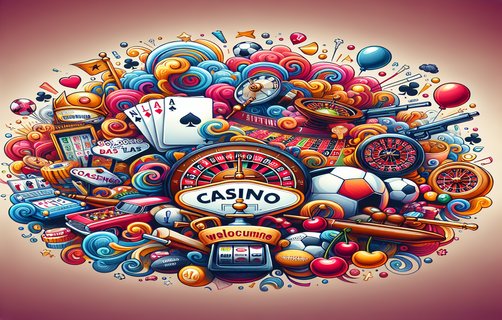The Art of Strategy in Table Games: Insights from a Pathfinder
Interviewer: Welcome, Sagar! Today, we’re diving into the fascinating world of table games, where strategy, probability, and psychology play crucial roles. As a pathfinder in this realm, what would you say is the foundation for winning strategies in these games?
Sagar: Thank you for having me! The cornerstone of any winning strategy in table games starts with a solid understanding of the game mechanics—rules, odds, and payout structures. It’s also vital to familiarize yourself with the different types of players you’ll encounter at the table. Whether you’re playing poker, blackjack, or roulette, adapting your strategy based on your opponents’ behavior can significantly enhance your chances of winning.
Interviewer: Interesting! Can you tell us more about how leaderboards come into play and what insights they provide for a strategic approach?
Sagar: Absolutely! Leaderboards are essential in gauging your performance compared to other players. They reflect not only your win rate but also your consistency over time. By analyzing your position on the leaderboard, you can identify patterns in your play style—what works, what doesn’t, and how you stack up against the competition. This self-assessment opens up opportunities for growth and refinement of your strategies.
Interviewer: Speaking of patterns, probability calculations seem to be a critical aspect as well. How do you incorporate probability into your gameplay?
Sagar: Probability is the backbone of decision-making in table games. For instance, in poker, understanding the odds of getting a certain hand can dictate whether you should bet or fold. By calculating these odds, players can make informed decisions, optimizing their chances to win. Moreover, recognizing the probabilities of various outcomes allows you to exploit situations where the odds are in your favor.

Interviewer: That leads us to turn and river play in poker. How do you adjust your strategies during these crucial moments?
Sagar: Turn and river cards can dramatically change the landscape of a poker game. Each turn introduces new potential hands and alters existing ones. The key is to stay adaptable. If you hit a favorable turn, it might be an opportunity to increase your bet size to capitalize on your hand’s strength. Conversely, if the turn is unfavorable, it’s crucial to assess the risk—sometimes, a strategic check can reveal more about your opponents' hands without exposing yourself too much.
Interviewer: Adjusting your bet sizes seems like a delicate balance. How do you decide when to raise or lower your bets?
Sagar: Adjusting bet sizes should be a calculated move, informed by how the game is progressing. If you're confident in your hand, raising can apply pressure and force opponents to fold. However, it's essential to be aware of your table image—if you've been aggressive all night, you may appear bluff-prone, and opponents might call your bets more frequently. Conversely, if you've been cautious, an unexpected raise could make them question their hand. Understanding the dynamics at play allows for strategic adjustments that can turn the tide in your favor.

Interviewer: How do you recommend reading betting patterns to refine your strategic approach?
Sagar: Observing betting patterns is a powerful tool in a player's arsenal. Each player has unique tendencies—some might play aggressively at the turn, while others may be more conservative. By paying close attention, you can identify whether your opponents are bluffing or holding strong hands. Patterns can reveal a lot about their behavior, allowing you to make educated decisions. This skill often distinguishes average players from the truly exceptional ones.
Interviewer: As a final thought, how do you see the combination of these strategies shaping the future of table games?
Sagar: The evolution of table games will undoubtedly hinge on how players adapt their strategies in increasingly complex environments. As technology continues to influence the gaming experience—think online platforms and AI-assisted gameplay—the importance of understanding human psychology and adaptability will only grow. It’s about creating a balance between mathematical probability and human intuition. Those who can master this balance will thrive and lead the charge into the next era of gaming.
Interviewer: Thank you, Sagar, for sharing your insights! It’s clear that mastery in table games is as much about strategy and observation as it is about skill.
